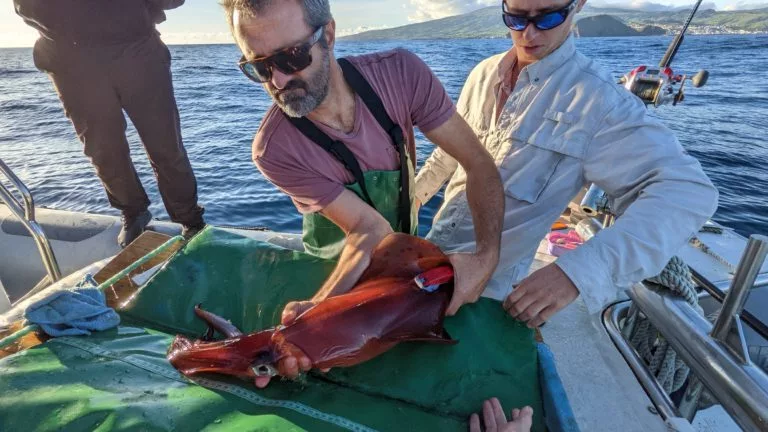The tracking of squid and other soft-bodied sea creatures may soon be a lot more doable, thanks to a new bioadhesive interface. It's claimed to be much gentler than current attachment methods, while still remaining up to the task.
Quite often, when scientists wish to study a marine animal's movements, habitat and/or behaviour, they mount a data-logging tracking device on that creature's body.
Utilizing various sensors and other electronics, the gadget records data for a period of days, weeks or even months before detaching and floating to the surface. It then transmits its GPS coordinates, allowing it to be retrieved by the researchers.
In the case of thick-skinned or otherwise tough-bodied animals like whales and sea turtles, the tracker can be easily attached via a suction cup, rigid glue or even sutures. Such an attachment technique could be quite harmful, however, to fragile-bodied creatures like squid, octopi and jellyfish.
That's where the new interface comes in.
It's known as the Bioadhesive Interface for Marine Sensors (BIMS), and is being developed by a team of scientists from the Woods Hole Oceanographic Institution and MIT.

The interface takes the form of a thin layer of dehydrated biodegradable hydrogel, which is applied to the underside of the tracker. When that material comes into contact with the wet skin of the animal, it absorbs the seawater and rehydrates. It then forms a soft, flexible adhesive that bonds with the animal's skin, conforming to its contours.
Importantly, the attachment process takes only 20 seconds. By contrast, other tagging methods can take over eight minutes, which may place a great deal of stress on the captured animal before it's released.
The technology has been successfully tested on squids (along with skates, flounders and lobsters) in both a large saltwater pool and in field tests performed near the Azores Islands in Portugal. It was found that the interface stayed affixed to the creatures for up to three days before harmlessly releasing, and it did not appear to affect their baseline behaviour.

"The BIMS allows us to sensor the animals and the oceans, so we can better predict the impact of climate change and other concerns affecting marine environments," said Woods Hole associate scientist Aran Mooney, co-author of a Nature Communications paper on the study.
Researchers at Saudi Arabia's King Abdullah University of Science and Technology have also developed a delicate-creature-friendly tagging system of their own, called Marine Skin.





